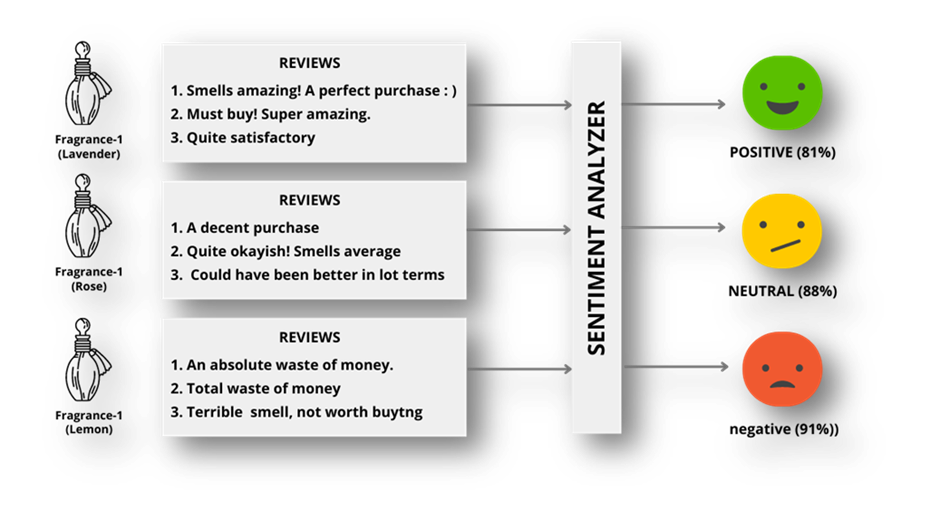In Part 1 of Agile Marketing series, we looked at the fundamental concepts of Agile and data-driven marketing and their ultimate significance. Now, in this part, we’ve examined advanced techniques & trends shaping Agile and data-driven marketing.
Advanced Data-Driven Insights…
In a data-driven marketing arena, gaining deeper insights from data is crucial. Advanced techniques such as predictive analytics, sentiment analysis, and advanced data visualization are taking center stage. These methods allow marketers to extract valuable information from vast datasets enabling them to make more informed decisions and create highly targeted campaigns.
Predictive Analytics
Predictive analytics uses historical data and machine learning algorithms to forecast future trends and outcomes. It enables marketers to anticipate customer behavior and preferences, optimize marketing strategies, and allocate resources more effectively.
Sentiment Analysis
Sentiment analysis also known as opinion mining determines the sentiment or emotional tone of text data. This technique is particularly valuable for understanding customer opinions and feedback on social media, product reviews, and customer support interactions.
By continuously monitoring customer reactions, sentiment analysis helps track significant shifts in consumer behaviors and attitudes about products.

Advanced-Data Visualization
Advanced data visualization tools go beyond basic charts and graphs. They use interactive visuals such as heatmaps, network diagrams, and geographical mapping, to help marketers gain deeper insights from complex datasets. Data visualization tools enable marketers to spot patterns, trends, and correlations that might be challenging to identify through raw data alone.
Consider a global e-commerce platform that uses advanced data visualization to track user behavior on its website. They can create interactive dashboards that show how users from different regions navigate the site which products are popular in specific locations, and where users tend to drop off in the conversion funnel. This insight can inform localized marketing strategies and website optimizations.
Leveraging AI & Machine Learning
Artificial Intelligence (AI) and Machine Learning (ML) are revolutionizing data-driven marketing. These technologies enable marketers to automate tasks, personalize experiences, and make data-driven decisions at scale.
Chatbots
AI-powered conversational agents that interact with users in real-time. They can answer questions, provide product recommendations, and even assist with purchases. Research by Grand View Research estimates that the chatbot market size will reach $1.25 billion by 2025.
Recommendation Engines…
Recommendation engines, powered by ML algorithms, analyze user behavior and preferences to suggest relevant products or content. These engines are prevalent in e-commerce, streaming services, and content platforms.
Companies like Amazon and Netflix excel in this domain. Amazon’s recommendation engine drives approximately 35% of its total revenue by recommending products that users are likely to purchase based on their browsing and purchase history.
Emerging Marketing Channels
The marketing landscape continues to evolve with the emergence of new channels driven by data and technology. Let’s explore some of these channels and how they are reshaping marketing strategies.
Voice Search
Voice search is becoming increasingly popular with the proliferation of voice-activated devices like smartphones and smart speakers. Optimizing content for voice search is essential as it requires a different approach than traditional text-based search engine optimization (SEO).
Brands are adapting by creating content that answers voice queries and optimizing their websites for voice-based interactions.
Augmented Reality (AR) and Virtual Reality (VR) Marketing
AR and VR technologies offer immersive experiences for users as they showcase products, offer virtual tours, and create interactive brand experiences. The AR & VR market worldwide is projected to grow by 13.72% (2023-2027) resulting in a market volume of US$52.05bn in 2027
IKEA has adopted AR to allow customers to visualize furniture in their homes before making a purchase decision, enhancing the shopping experience.
The Role of Data in Content Creation
Data is reshaping content creation. Advanced strategies like dynamic content generation and AI-driven content recommendation engines are driving content success.
Dynamic Content Generation
Dynamic content generation involves creating content that adapts in real-time based on user interactions or preferences. It’s particularly useful in email marketing, where personalized content can significantly improve engagement and conversion rates.
Consider an e-commerce company sending personalized product recommendations in their email campaigns. Dynamic content generation can ensure that each recipient sees products tailored to their interests and past browsing behavior.
It’s no wonder that 65% of marketing executives cite dynamic content in email marketing as the most effective personalization tactic.
AI-Driven Content Recommendation Engines
Content recommendation engines use machine learning algorithms to suggest articles, videos, products, or other content based on a user’s past behavior. These engines are prevalent in content platforms like news websites and streaming services.

Amazon is one of the country’s leading e-commerce platforms, offering a vast selection of products including electronics, clothing, books & more. To provide a highly personalized shopping experience to its users, Amazon employs an advanced AI-driven recommendation engine.
User Behavior Tracking… As users interact with the Amazon India website or mobile app, the recommendation engine continuously tracks their behavior:
Product Views… It monitors which products users view, the categories they explore, and how much time they spend on each product page.
Search Queries… The engine records the search queries users enter, which may indicate their current shopping interests or needs.
Purchase History… For registered users, the engine tracks their purchase history, including the types of products they buy, brands they prefer and price ranges they typically shop within.
User Interactions… It considers user interactions such as adding items to the cart, wishlisting products, and leaving product reviews.
Machine Learning Algorithms… Amazon’s recommendation engine relies on sophisticated machine learning algorithms including collaborative filtering, natural language processing (NLP), and deep learning, to analyze this vast amount of user data.
Here’s how the AI-driven recommendation engine operates in real-time: –
Anika, a registered user, opens the Amazon app on her smartphone to shop for a new laptop.
Real-Time Tracking… The engine detects Anika’s presence on the platform and begins tracking her behavior.
Current Behavior… Anika starts by entering her search query, “laptop for graphic design.”
Immediate Suggestions… In real-time, as Anika browses through the search results and laptop listings, the AI-driven engine generates immediate suggestions:
It recommends laptops known for their performance in graphic design such as those with powerful processors and dedicated graphics cards.
It highlights laptops from brands that Anika has previously purchased or shown interest in.
It offers a range of laptops across different price points, including options for budget-conscious shoppers and premium models.
Continuous Learning… As Anika adds laptops to her cart and compares different models, the recommendation engine learns from her real-time behavior. It understands that she is seeking a laptop that balances performance and affordability.
Dynamic Recommendations… After Anika makes her purchase, the recommendation engine continues to provide a personalized experience.
It updates her profile with her most recent purchase, influencing future recommendations.
It may suggest laptop accessories such as laptop bags or external hard drives based on her recent purchase.
The outcome…
Anika is delighted with her shopping experience on Amazon. She finds the personalized laptop recommendations helpful, saving her time in selecting the right product. This level of personalization keeps Anika engaged on the platform and encourages her to return for future purchases.
So, ultimately Amazon’s AI-driven content recommendation engine enhances user engagement and satisfaction, ultimately benefiting both users like Anika and Amazon India’s business growth as an e-commerce platform.
For a comprehensive read – How Does The Algorithm Of The eCommerce Giant Work?
To Conclude
From predictive analytics to hyper-personalization and ethical data practices, the future of marketing belongs to those who harness the power of data while respecting consumer privacy.
As we move forward, the ability to adapt quickly and make data-driven decisions with precision will continue to be the hallmark of successful marketers. Stay informed, adapt, and be ready for the dynamic world of marketing in the years ahead…





